Navigating in the wilderness, where you find yourself in off-trail forests and with landmark signs being destroyed, can really be challenging even when you have a compass and a map with you. Many people can bear testimony to this. The fact is that, the compass magnetic needle doesn’t point exactly to the True North. It is easily manipulated by the Earth’s magnetic field. It’s only in exceptional locations where the Magnetic North might be lined up with the True (Geographic) North.
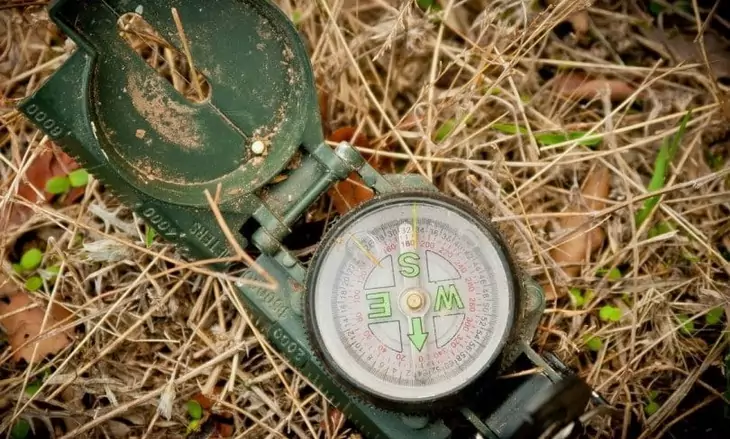
You just have to master manual adjustment of the compass to compensate for the local magnetic declination. We will explain below what magnetic declination is and how to adjust compass declination.
What is a magnetic declination?
A magnetic declination is the angle between a True North and a Magnetic North. This angle can be either eastern or western depending on where you are on earth. If it is west of the True North, for example, we call that a negative local declination, and conversely, we call it a positive local declination if it is east of the True North. In some other parts of the world, the angle between these two North directions can be infinitesimal, and thus its effect can be neglected. So, it won’t have much of the impact on your directions.
For significant values of the local magnetic declination, it is important to understand that how to adjust the compass accordingly or how to manually account for that error by performing minor arithmetic calculations. Many people got lost in many occasions because of the overlooked compass declination adjustment. Some didn’t actually know about this effect. So we don’t want you to be like them, hence we equip you will skills on how to compensate for that below.
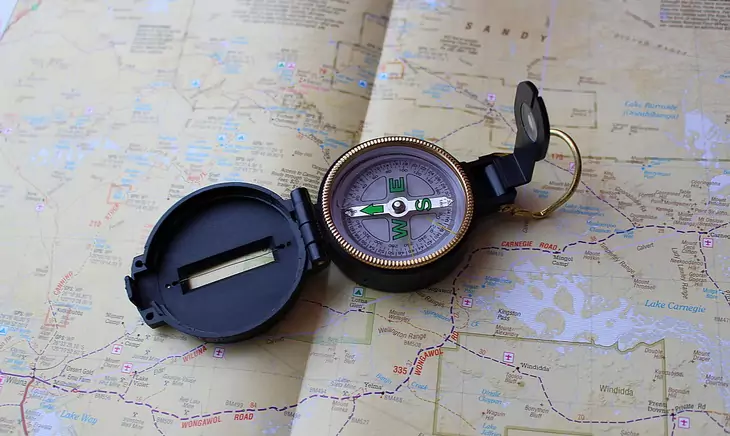
The prerequisite to an efficient compass declination adjustment is an adjustable compass. There are some cheaper models of compass that have fixed declination. Those are a no-go area if you know that you travel to various locations with different declinations. Keep in mind that declinations vary from time to time and from one location to another. For example, you cannot rely on local declination that was determined 10 years ago. Simply get to the web to find out about the recent values. Again, you cannot rely on the same value in Francisco as in California. These values do vary due to a constant fluctuation of the Earth’s magnetic field.
If we were to recommend to you a good compass, we would go with the Sunnto adjustable compasses. The adjustable compasses are equipped with screwdrivers and a declination scale so that you can make the adjustment accordingly. Once the declination has been adjusted, you can only adjust it again provided you get into a different location. But the choice of compasses rests with you that which brand is suitable. See our article featuring reviews of the best compass brands you may consider.
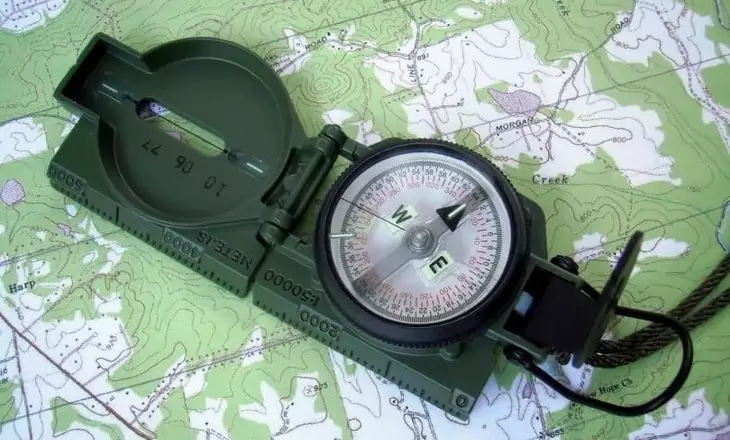
Before we can delve into the main subject of adjusting the compass declination, let’s help you understand the declination values. You’ll then be in a good position to adjust the compass declination without a problem.
Understanding Compass Declination Values
As we’ve highlighted above, a declination value represents the angle between the True North and the Magnetic North in a certain location. East-based values are regarded as positive, while those in the west direction are regarded as negative. For example, if you are in a location wherein it states that you have an eastern declination of 25 degrees; just know that it is equivalent to -25 degrees. We will depict some scenarios below to help you understand these values thoroughly.
Scenario One
Let’s say you are on a hike adventure in the city of Toronto in Canada and current declination value reads -17 degrees, which is the west of True North, and upon that, you want to travel in a 83 degree direction. Meanwhile, your compass indicates that your bearing is 83 degrees, which is actually a direction from magnetic north not a True North. In actual sense, considering the declination value of 17 degrees West, you are actually 66 degrees from the True North.

You simply add the declination value and the compass bearing value which will give you 66 degrees. This, therefore, tells you that you have to set your compass to 100 degrees so that it can be equivalent to 83 degrees from the True North Pole.
Scenario Two
Let’s assume you are in Francisco and your current declination value is +15, which is east of True North. Meanwhile, your compass indicates that your bearing is 75 degrees. Just do the same calculations as above and you will find out that your bearing is actually 90 degrees. So, if you want a bearing of 75 as indicated by the compass, you will have to adjust to 60 degrees, which will be compensated in line with the local declination value.

With these scenarios, we’ve sought to show you that in order to determine your bearing on the compass and the map, you have to perform some minor calculations. It is important to determine your local declination value so that you can add it to your compass reading to determine the exact location in relation with the True North for an accurate travel. Otherwise, you will get lost.
In simple terms, to understand these calculations, you can perform the opposite of your declination values. For instance, when the declination value is +15, then reduce the compass bearing by 15 degrees. If it is -20 degrees, you have to add the 20 degrees to your compass reading. That’s easy, isn’t?
How to adjust the declination on the compass?
The aforementioned magnetic declination calculations will become handy in a manual adjustment of the compass declination. Once you master how to add and subtract the declination values from the compass readings, you are half way to the right direction in relation with the True North regardless of the presence or the absence of landmarks. These arithmetic calculations are essential in an accurate translation of the bearings to the map.
In a nutshell, translate the bearing read from the map to the compass bearing by adding the local declination value if it is westerly or by subtracting if it is easterly. In addition to these calculations, you need to adjust the compass direction-indicators manually. Adjustable compasses come with small screwdrivers for this task.
The adjustable compass allows you to turn the direction-indicating arrow independently from the compass dial. Before you can adjust it, firstly ensure that you know your local magnetic declination as emphasized above. The next step is to use the screwdriver or the key to twist the screw that can be located underneath or on the compass. Twisting the screw helps calibrate the compass in accordance with the magnetic declination values. Turn the screw until that arrow moves away from the compass ring’s north.
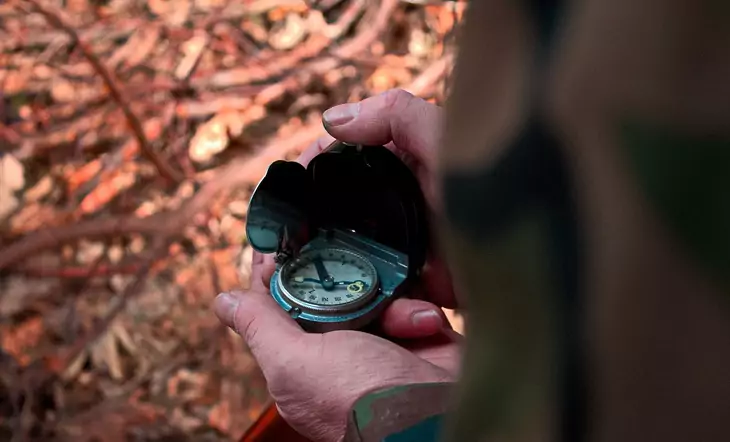
If your magnetic declination is easterly, then adjust that arrow until it points to the east direction at the exact value determined by the declination value. That will be in the clockwise directions. If it is westerly, then adjust the arrow anti-clockwise to match with the exact value of the magnetic declination. You may watch this video https://www.youtube.com/watch?v=peu7uMp0cVU to give you an insight about how to adjust the compass magnetic declination.
After performing these adjustments, you will be all set up to continue with your wilderness hike without getting lost. There’s no need to continually check the declination value if you’re in the same location for the period. But there will be a need if you decide to go to another location. For quality assurance, you can continuously check the magnetic declination just to err on the side of caution.
IMPORTANT: The deviation of the compass directions from the True North is not only caused by the magnetic declination. Other factors can be equally liable to that. For instance, your belt buckle, your metallic watch, your car keys, the installed underground pipes, power lines or bridges, can all have an impact on the compass. So, for accurate compass reading, make sure that you stay away from such obstacles even though it can be hard to do so.
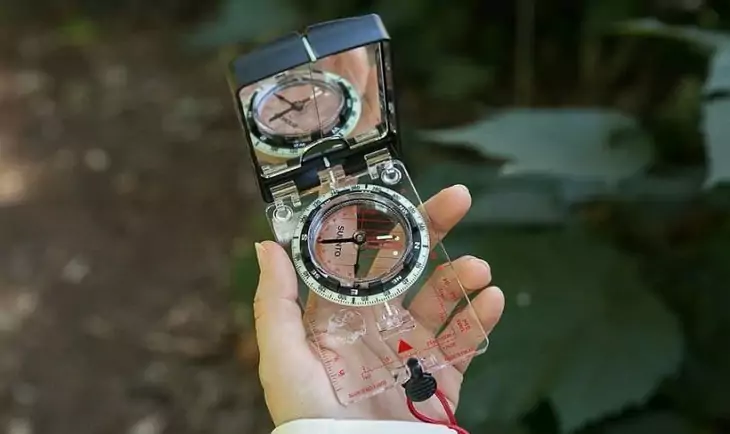
If you have these magnetic materials, it is then important that you continually check the compass and the map to see if there are any deviations attributable to them. For the avoidable magnetic materials such as the power lines, please stay away from them to avoid jeopardizing accurate readings of the compass.
How to use a compass with a map?
Given our guidelines above, you might know how to adjust the compass declination thereafter, but understanding the combo (compass and map usage) is equally important too. We’ll guide you below on the assumption that the compass has not been adjusted as yet for magnetic declination.
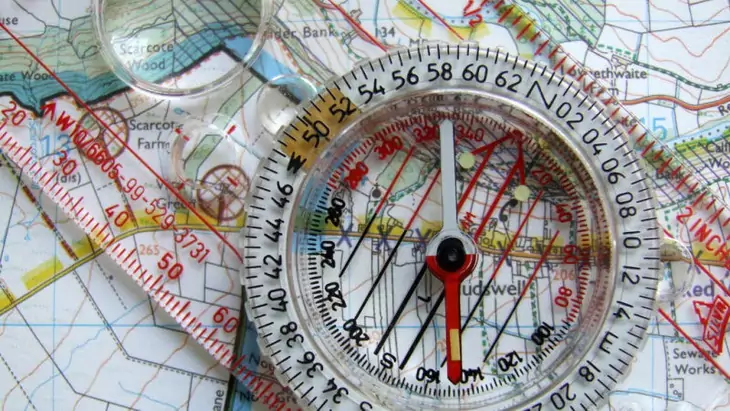
In this instance, the direction-indicating arrow will still be lining up with the compass ring’s north. Follow the steps below:
- When using a topographical map, there is information at the bottom that indicates the difference between the Magnetic North, True North and the Grid North. Firstly, get the magnetic declination of the area depicted on the map. As we forewarned you, do not rely on the figures that were determined years ago because the magnetic declination varies as time goes on.
- Then take a pencil to connect your destination with your current standpoint with a line.
- Put the compass on the map and let the needle point to the intersection of the map bearing and that of the neat line.
- Then rotate the compass until the north of the compass, matches with the map’s north, so that you can read the bearings from the compass dial.
- Now the declination values come into place. For instance, if the magnetic declination is easterly, subtract the declination value from the compass bearing. If it’s westerly, then add to that. These are the same arithmetic calculations that we’ve derived above.
- After calculating the new bearing in line with the magnetic declination, rotate the compass dial to adjust to the new value in line with the index line.
- Then continue with your travel until you reach your destination. The process of aligning the compass with the topographical map to determine the direction is to be repeated as many times as possible to ensure that you are not getting lost.
Be sure you know all important survival basics. Check out our guidelines on map reading to ensure your safety on the trail.
How to use the compass with the GPS?
GPS is another indispensable tool to be used in combination with the compass to determine the exact direction to your destination. It is versatile in that it can be used with either the fixed compass or the adjustable one for declination. Many devices nowadays come equipped with GPS, so you should be sorted out with it. For excellent reviews of the best GPS gadgets, see our informative piece on this topic.
Let’s take a scenario where your compass is not adjustable for magnetic declination. Our assumption is that you’re in the city of London with local magnetic declination of 16 degrees west of the True North Pole, whereas your destination is located north of your standpoint. Firstly set your GPS to the Magnetic North. Then the GPS will depict a certain bearing that should be followed to reach your destination. You must dial that certain bearing on the compass.
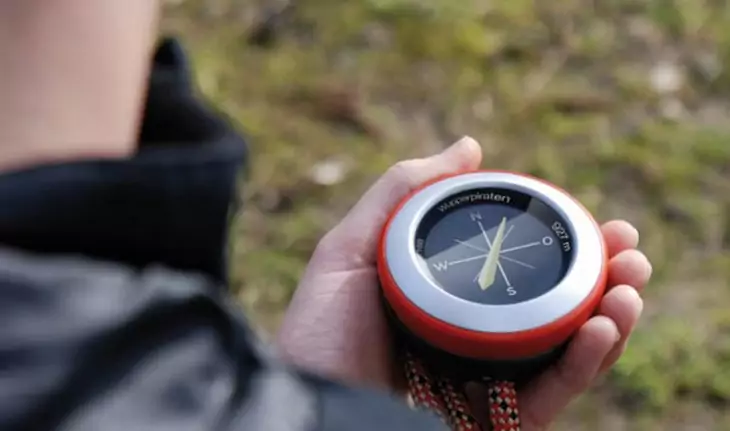
Turn the compass until the magnetic needle overlaps with the direction-indicating arrow. It’s recommended that you turn with your whole body. You should then be able to notice a landmark along that depicted bearing. That’s the right direction, continue towards it.
What happens when you use the GPS with the adjustable compass? Let’s find out. Firstly, let us assume that your local magnetic declination is 10 degrees west of the True North. This time set your GPS to True North. It will promptly indicate that a bearing of 0 degrees should be followed to reach your destination. In line with the local magnetic declination, adjust the declination on the compass.
The direction-indication arrow should be pointed towards 10 degrees west. That’s anti-clockwise. Then dial 0 degrees on the compass. Turn the compass until the magnetic needle (red) overlays the direction-indicating arrow. After rotating the compass, you should be able to spot a landmark along the path indicated by the bearing. That’s the direction to follow to your destination.
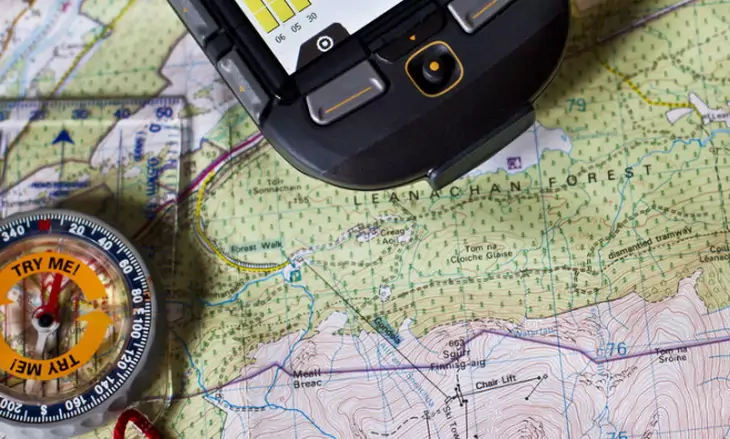
The processes should be repeated until you reach your destination. That’s the fruit of using the GPS with the compass. It becomes handful if you are clueless in understanding the maps. Perhaps you have skipped your Geography class in high school, but then you don’t need that comprehensive understanding of maps when using the GPS. Just a basic grasp, is sufficient enough.
Wrapping up!
We have gone all the way to give you the insights on how to adjust the compass magnetic declination so that you can get the correct readings. From our analysis, it’s apparent that compasses without adjustable declination are a no-go area. They are usually cheaper than the adjustable ones. But just to stay out of danger of getting lost, it is better to spend a lot on an advanced compass. We know that there’s a lot on the market, but we’ve recommended the Suunto adjustable compasses.
Furthermore, we have highlighted the fact that local magnetic declination alone does not affect the compass readings. Some factors such as the magnetic materials are to be avoided. Make sure that the keys and other metals are far from reach. Also, stay away from crossing bridges and power lines to get the precise readings from your compass.
Having equipped you with this information, we are confident that you can adjust almost any adjustable compass. It is important to account for such errors to avoid traveling for hundreds of miles to a wrong destination. In some locations, the declination value can be so infinitesimal that its effects are neglected. But most of the locations have a significant difference due to the fluctuation of the magnetic field. It is also important that you acquaint yourself with the basic arithmetic magnetic calculations that we’ve introduced earlier on. They will help you with all the adjustment tasks.
For more useful tips on how to use a compass in 7 easy steps, check out our article on this crucial survival topic.
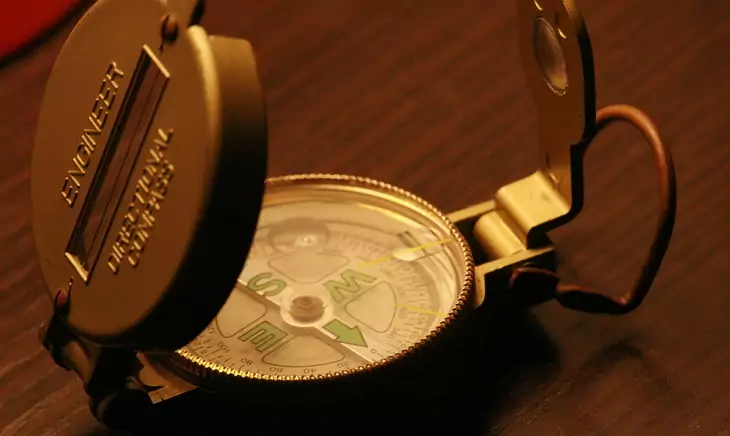
Have you ever adjusted a compass before? Please share with us your experience. If you recommend some models as well please share with our readers below.

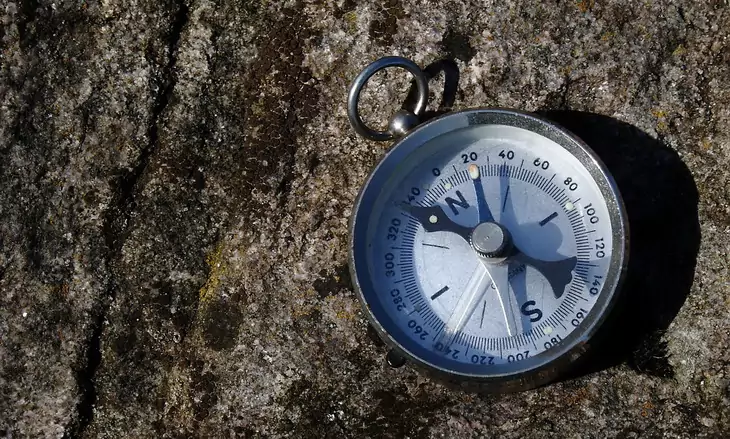






Just like this article says, I had no idea that compass declination could affect my readings. I’m off to go adjust my compass right now. Thankfully I don’t rely on it when I’m out on the trail, but now that I know this I’d like to be prepared. Thank you for the heads up!
Thank you for reading!
Calculating compass declination is such a vital skill that people seem to forget about. It’s nice to see such a thorough article explaining the how and why of the whole process. I appreciate the different breakdowns of how to use a compass with a map and then with GPS.
Thank you!